Henri Matisse didn’t just use colour—he celebrated it. Bursting with energy, movement, and bold simplicity, his work redefined what art could be. From vivid Fauvist canvases to elegant paper cut-outs, Matisse invited the world to feel joy, rhythm, and emotion through pure visual expression.
Henri Matisse was born in 1869 in Le Cateau-Cambrésis, northern France. He originally studied law and only discovered painting while recovering from appendicitis in his twenties. That moment changed everything.
Matisse enrolled in art school in Paris and soon joined a group of painters pushing boundaries. By 1905, his wild use of colour earned him the label of fauve—“wild beast.” Far from being insulted, Matisse embraced the term and led the Fauvist movement.
Throughout his career, he experimented boldly, from expressive portraits to abstract cut-outs. For Matisse, art was about emotional truth, not literal realism.
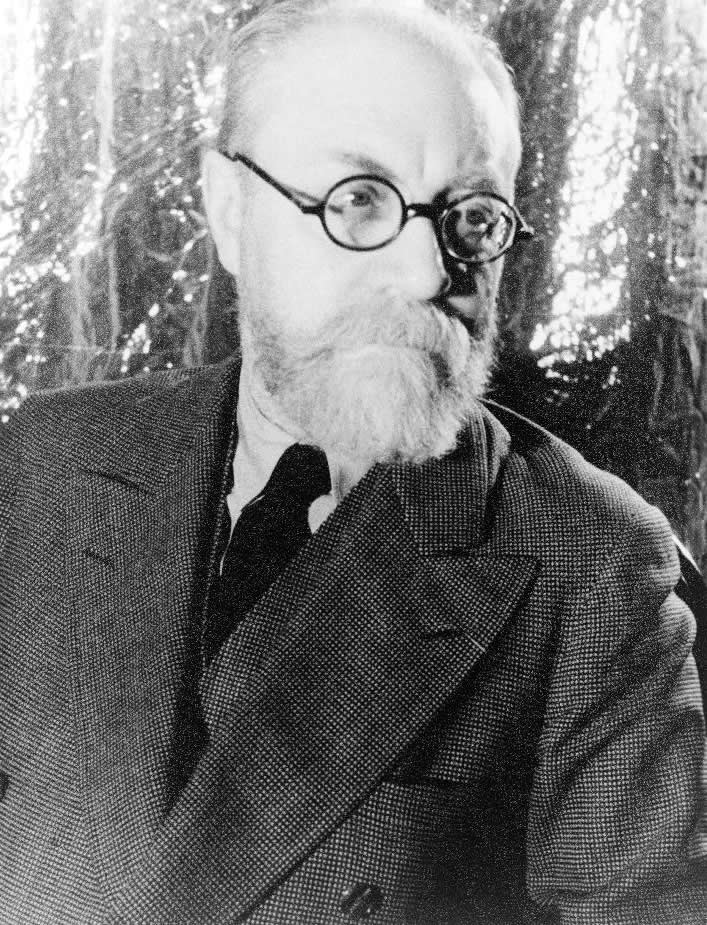
French uses the word "couleur" to mean “colour”—a key concept in Matisse’s work:
Did you know? Matisse once said: “La couleur surtout et peut-être plus que le dessin est une libération.” (Colour, above
all else— maybe even more than drawing—is a liberation.)
Matisse’s art is vibrant, playful, and full of life. Whether using paint or scissors, he sought balance and beauty. His subjects—dancers, interiors, flora, and figures—are transformed through simplified lines and radiant colour. He famously said he wanted his work to be “a soothing, calming influence on the mind, like a good armchair.”
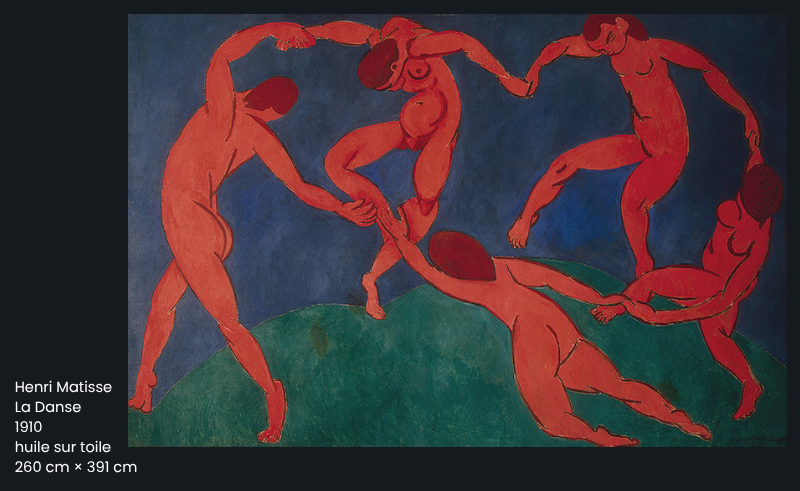
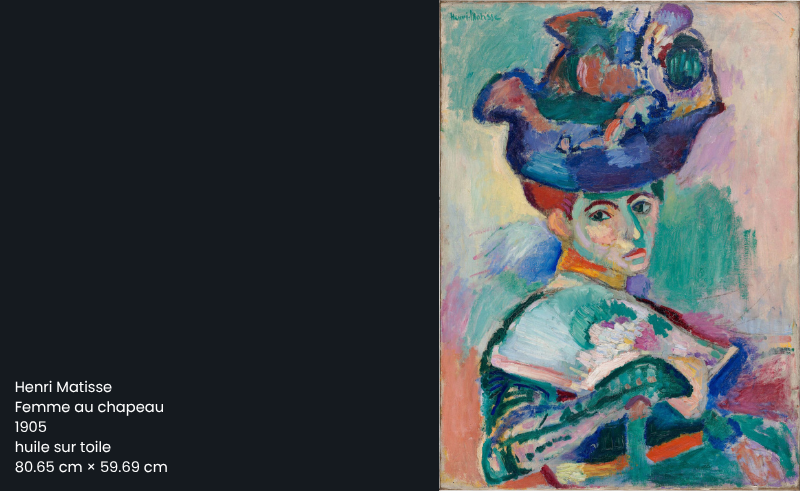
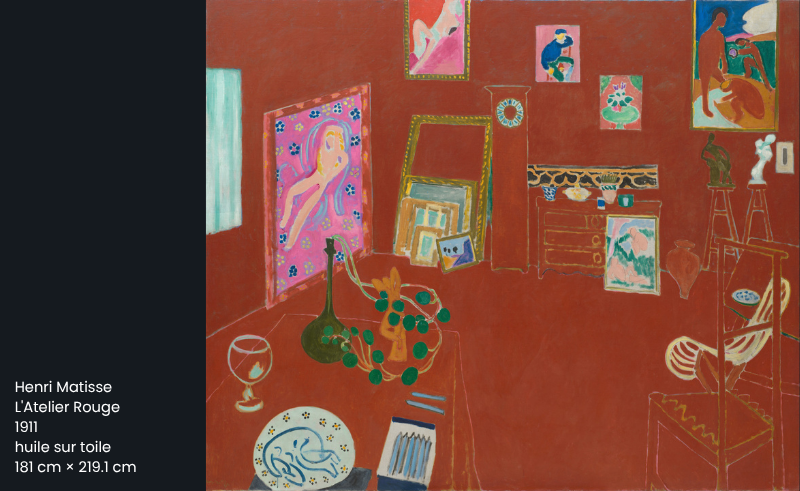
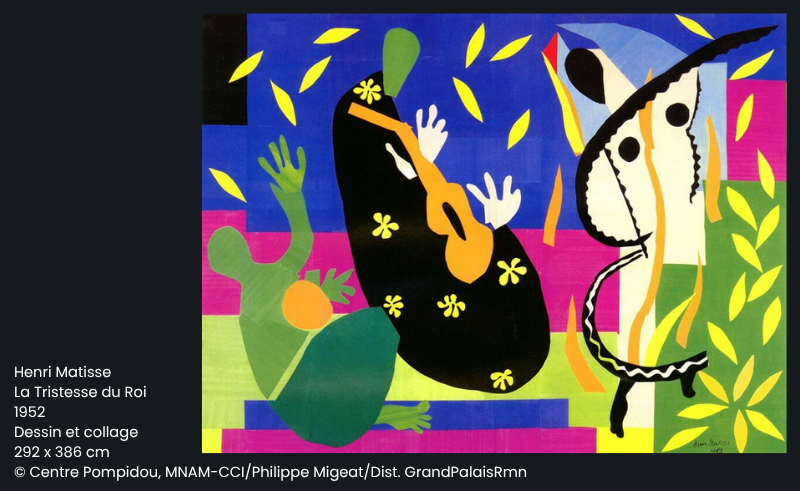
La Danse (Dance)
1910
A symbol of Matisse’s joy-filled vision, this piece shows five figures dancing in a circle, bursting with energy and rhythm. The vivid red, blue, and green create a bold harmony. It is housed at the Hermitage Museum in St. Petersburg.
La femme au chapeau (Woman with a Hat)
1905
This portrait of Matisse’s wife caused a scandal at the Salon d'Automne. Why? Because of its “wild” colours. It became an iconic Fauvist statement—celebrating freedom over realism. See it at the SFMOMA in San Francisco.
L’Atelier Rouge (The Red Studio)
1911
An extraordinary interior scene where perspective, line, and colour are all flattened into a single glowing red plane. It’s a portrait of Matisse’s own studio—filled with artworks. You can view it at the MoMA in New York.
La Tristesse du Roi (The Sorrows of the King)
1952
One of his late paper cut-outs, this large collage is both playful and profound. Created while bedridden, it shows Matisse transforming constraint into creativity. It’s on display at the Centre Pompidou in Paris.
French vocabulary:
In his later years, Matisse’s health declined, but his creativity soared. After surgery left him bedridden, he turned to paper cut-outs—what he called “painting with scissors.” With the help of assistants, he created massive, luminous works from his bed or wheelchair.
He said: “Il faut regarder toute la vie avec des yeux d’enfant.” — You must look at life with the eyes of a child.
His art continued to evolve, reminding us that joy and beauty can flourish, even in limitation.
Grammar tip:
Note how adjectives follow the noun in French: une couleur vive (a bright colour). Many French adjectives come after the noun they describe, especially colours.
Matisse’s art lives in museums all around the world: the Centre Pompidou, the MoMA, the Tate Modern, and more. You can also explore his joyful vision online through Google Arts & Culture or visit the Musée Matisse in Nice—virtually or in person!